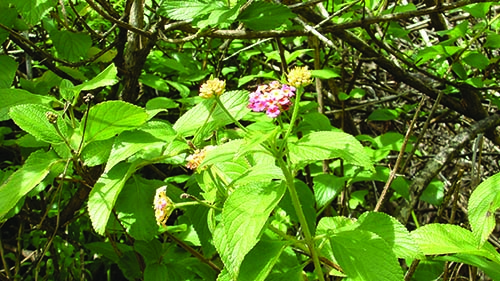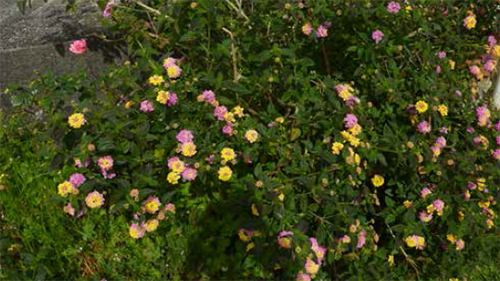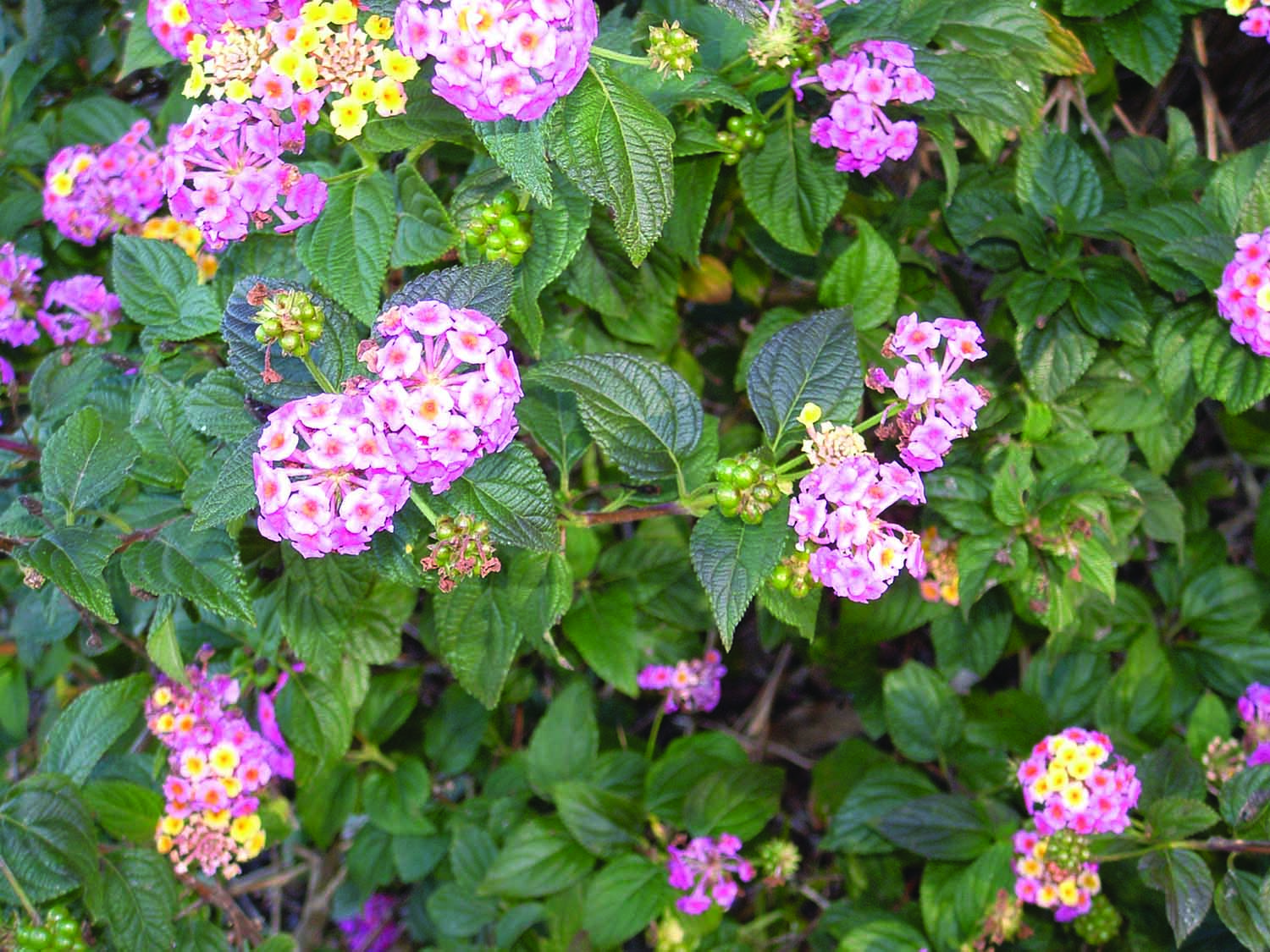| Management programme |
| Progressive containment |
| Objectives |
| Reduce the amount of lantana and limit the locations that have it within the Waikato region. |
| Impacts |
| Economic, biodiversity, social and cultural wellbeing, amenity/recreation, animal welfare |
Lantana, native to tropical Central and South America, was originally introduced to New Zealand as an ornamental shrub. It’s now recognised as invasive and considered a pest plant both here and in many other parts of the world. It’s a low, multi-branched, scrambling perennial shrub with a strong root system. It grows 2m-4m tall and has backward-pointing prickles on its stems.

What does it look like?
Flowers
- Between 20-40 small, tubular fragrant flowers in each flower head.
- Colours range from white, cream or yellow to orange, pink, purple or red.
- Flowers are present all year round (in frost free areas).
Fruit/seeds
- Fruit small (about 5mm), produced in clusters.
- Initially green, ripening to purple black.
- One small pale seed per fruit.
- Warning! Fruit is inedible to people and animals.
Leaves/stems
- Leaves oval and wrinkly, with fine hairs.
- Leaves grow in opposite pairs along the stems.
- Leaves give off a strong small when crushed.
Why is it a pest?
Lantana is a long-lived scrambling evergreen shrub. It is very competitive in disturbed and high light conditions. It grows as individual shrubs or as dense thickets, that can totally smother and replace low growing plants, causing permanent loss of habitat. In disturbed native forests it can become the dominant understorey species, disrupting succession and decreasing biodiversity. Lantana can also impact severely on agriculture land by reducing pasture productivity. It’s also toxic to stock.
In addition, lantana is ‘allelopathic’, which means it releases chemicals into the surrounding soil that can prevent other plants establishing or reduce the vigour of nearby plants.
Lantana spreads via its abundant bird-dispersed seeds, and vegetatively via plant fragments. Its woody taproot will produce suckers when broken, and it also grows easily by layering where its branches touch the ground and form roots.
It’s a serious problem in Northland and Auckland, where it forms dense thickets that invade a wide variety of areas, from native and exotic forests to domestic gardens, roadsides, sand dunes, quarries, and wasteland. Lantana has the potential to do the same here in the Waikato.
Control methods
 Manual control
Manual control
- Small lantana plants can be dug out ensuring all roots are removed and disposed of safely.
- Always check the area where you have removed plants for new growth. Any missed roots will re-sprout to form a new plant if left.
Herbicide control
- Spraying is best done November to March. Spray plants with metsulfuron (5g per 10L water) and penetrant, ensuring all leaf surfaces are covered.
- Cut stump treatment can be conducted at any time of year and is best for single, larger plants. Stump treat with glyphosate 1 part/4 parts water.
- Always follow up with control until the seed bank has been exhausted.
Safety when using herbicides
- Follow the instructions on the manufacturer’s label.
- Always wear protective clothing.
- Always minimise the risk to other non-target plants.
- Contact the supplier for further advice.
Disclaimer: Any product names mentioned below are not an endorsement nor are they a criticism of similar products not mentioned.
Summary of herbicides and application methods for control
| Herbicide | Application |
| Picloram gel | Cut stump treatment. |
| Glyphosate | Spray application and cut stump treatment |
| Glyphosate gel | Cut stump treatment. |
| Metsulfuron | Spray application and cut stump treatment. |
| Triclopyr/picloram mix | Spray application and cut stump treatment. |
| Triclopyr | Spray application and cut stump treatment. |
| X-Tree ® | Basal treatment of trunk. |
| Herbicide rules will apply. You may need to notify neighbours if spraying. The Waikato Regional Plan explains the agrichemical (herbicides) use rule in section 6.2 | |
More information
Advice
- For additional information and advice on control methods, call our pest plant staff on freephone 0800 800 401.
- Chemical company representatives, farm supply stores, garden centres or the Weedbusters website can also be good sources for advice.
Publications
- The following publications are available for download or from Waikato Regional Council. Contact us to request a copy (freephone 0800 800 401).






